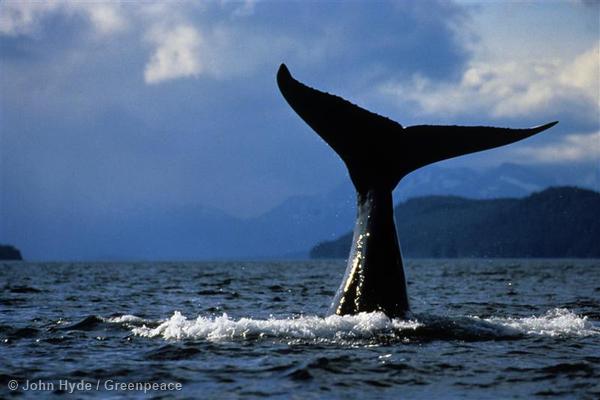Estimated population: less than 7,000 in the U.S.
Estimated Western North Pacific population: 394, endangered, IUCN Red list-threatened
Ways to identify this species: dark skin with white on their flippers and belly
Humpback Whale Biology
- Humpbacks are seasonal migrants, breeding in temperate waters of lower latitudes in the winter and spending summers in the colder, food-rich waters of higher latitudes, like the Bering Sea.
- Scientists identify humpbacks by the markings on their tails. Their flippers are one-third of their body length, which averages 47 feet for adult females and 43 feet for males.
- During the winter, male humpback whales produce long complicated songs that may be a method to attract females.
- A humpback consumes between 2,000 and 9,000 pounds of fish and krill a day.
Threats to Humpback Whales
- Until the early 20th century, humpbacks were considered too large and fast to be pursued by most whaling vessels. However, with the introduction of faster whaling ships and harpoon guns, whalers began targeting humpbacks. By the time commercial whaling was banned in 1986, humpback populations had declined to only 10 percent of their original size with only 1,000 humpbacks remaining in the entire North Pacific.
- Humpback whales have begun to recover from uncontrolled commercial whaling, but they are still threatened by entanglement in fishing nets and by collisions with ships. In addition, Japan announced plans to resume “scientific” whaling of humpback whales in 2007.
- Humpbacks have been shown to abandon breeding grounds and migratory routes when military sonar is being used nearby. This and other sources of human-generated noise in the oceans are a habitat concern for humpbacks.

